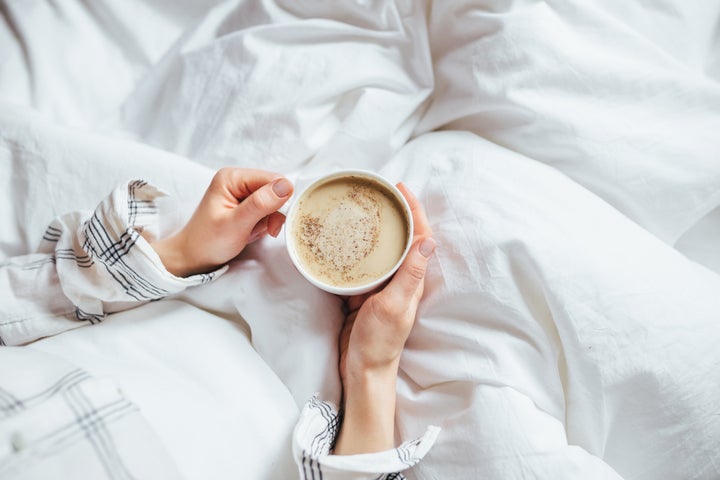
Tossing. Turning. Desperately counting sheep. Any of this sound familiar? A full 45 percent of Americans report having trouble falling and staying asleep, and these sleep issues can cause major problems, from low work productivity to seriously scary health issues.
If the majority of your sack time is spent staring at your alarm clock and obsessively calculating the hours of sleep you’d get if you passed out at that exact moment, you’ve probably tried every trick in the book to catch some peaceful Zs. Warm milk before bed? Amateur hour. No screen time after 8 p.m.? Been there, done that.
To help the experienced insomniacs among us, we’ve ditched the bedtime rulebook and partnered with Sleep Number to uncover six seemingly counterintuitive sleep solutions that’ll have you snoozing in no time.
1. Ban Extra Bedding
If you find yourself tossing and turning throughout the night, try sleeping without that pile of blankets to weigh you down. Though wrapping yourself up like a comatose burrito might be comfy in the short term, sleep experts say the optimal temperature for a solid night’s sleep is on the cooler side, around 60 to 67 degrees.
That might sound chilly, but your body temperature naturally decreases as you fall asleep, so keeping your bedroom at a crisp 65 degrees can speed up this wind-down process. Try swapping that heavy down comforter for a light cotton sheet, or investing in temperature-balancing bedding, and you’ll be on your way to dreamland in no time.
2. Early Morning Riser
When you’re a restless sleeper, the last thing you want to do is set an early alarm and head to the gym. But studies show that exercise first thing in the morning can help reduce blood pressure and promote restful sleep. In fact, those who work out at 7 a.m. tend to have longer, deeper sleep cycles than those who work out later in the day.
But, don’t let the research deceive you ― any amount of exercise, regardless of time of day, is good for your brain and body. As little as 10 minutes of aerobic exercise can improve the quality of your shut-eye. Our one bit of advice? Avoid high-intensity workouts just before bedtime and instead opt for anxiety-reducing activities like yoga.
3. Comfort ≠ Quality
You might think that when it comes to pillows, comfort is king, but you need comfort and support in a pillow. But those fluffy, lofted feather pillows could actually be hurting your neck and robbing you of a full night’s sleep. In fact, pillows without sturdy neck support are shown to impede sleep, particularly for side sleepers. Instead, opt for more supportive pillows that fill in the gap between your neck and shoulders to help with proper spinal alignment.
4. Caf Up To Wind Down
Avoiding caffeine is default rule No. 1 for those hoping to improve their sleep habits. But don’t hide your French press just yet. Dr. Sara Mednick, sleep expert at the University of California, Riverside, says that the conventional wisdom is all wrong when it comes to power naps. “Drink some caffeine, then take a nap,” she says. “The caffeine will take effect in 20 to 30 minutes, and [you will naturally] wake you up before you fall into a deep sleep, which prevents grogginess.”
““Drink some caffeine, then take a nap.”
- Dr. Sara Mednick, sleep expert, University of California, Riverside
Because it all boils down to biology, caffeine naps are a buzzworthy way of snagging some quick and dirty afternoon Zs. The competing effects of caffeine and adenosine, a sleepytime chemical, cause you to sleep soundly for the 20 to 30 minutes it takes for the caffeine to kick in and do its job. If you find yourself nodding off during the day, slurp down a cup of coffee or black tea, head to the nearest couch, and wait for biology to do its thing.
5. Night Owl
You might think hitting the sheets earlier is your best bet for snagging quality shut-eye, but sleep experts disagree. Shift your mindset from quantity of sleep to quality of sleep, suggests psychologist Helen Odessky.
Instead of tossing and turning in bed for hours before finally falling asleep, calculate the amount of sleep you get on an average night and hit the sheets with enough time to snag those hours. You’ll spend your bedtime hours in sound sleep rather than semi-restful sleep. Plus, you can use the extra evening hours to read that book you’ve been meaning to get to, or practicing sleep-inducing yoga stretches. More “you” time is never a bad thing!
6. Namaste In Bed
Surveys show that 55 percent of people who recently began practicing yoga report sleeping better. That’s because yoga reduces stress, empties the mind, and is great exercise to boot. If running isn’t your thing, try waking up early (see tip No. 2) and start your day with a light half-hour of yoga first thing. The best part? You don’t even have to leave your bed to get a good morning yoga workout in. Win-win!
Just like diet and exercise, sleep is unique to each person and important for optimal health. Sleep Number® beds adjust to your ideal level of firmness, comfort and support — your Sleep Number® setting. Plus, exclusive Sleep Number® pillows are designed to support your individual size, shape and sleeping position for the highest quality Zzzs.